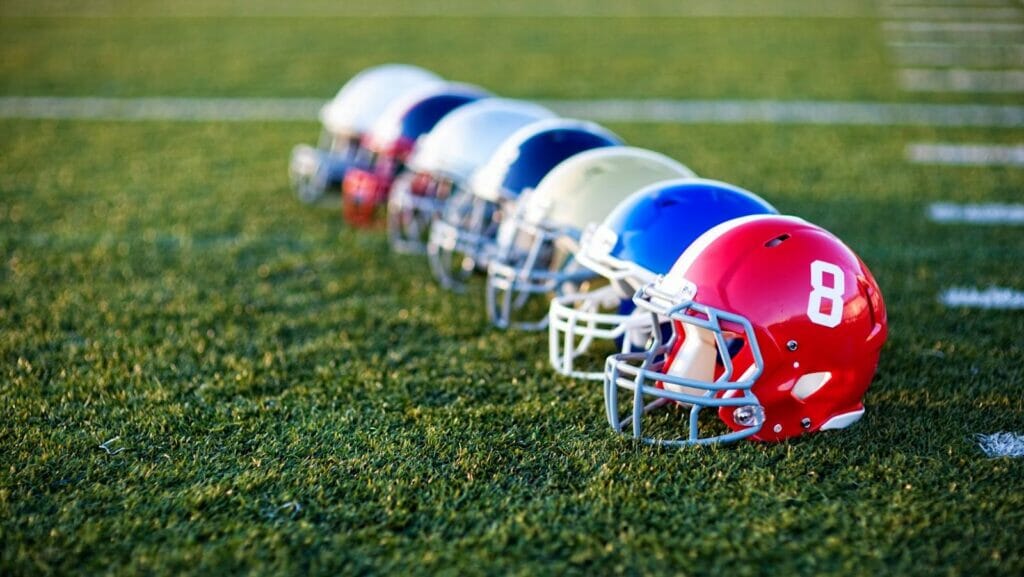
There’s no question that football helmets play a critical role in protecting players from potentially serious injuries. But what many people may not realize is just how complex and sophisticated these helmets have become in recent years. In fact, there are now a number of different technologies and materials used in today’s football helmets, each with its own unique benefits. Here are just a few interesting facts about football helmets that you may not know.
Football helmets have been around for over 100 years
Football helmets have been around for over 100 years and are used to protect players’ heads from injuries. Helmets are usually made of hard plastic or metal and have a cushion inside to absorb impact. The first plastic football helmet was developed in 1939 by John T. Riddell. His company, Riddell Sports, is still one of the leading manufacturers of football helmets today. The plastic helmet provided better protection than the leather helmet and quickly became the standard for players.
The first football helmet was made out of leather and had no face mask
The first football helmet was made out of leather and had no face mask. This made it difficult for players to protect their heads and face. In order to prevent injuries, players started to attach pieces of metal to their helmets. This eventually led to the development of the face mask.
Today’s football helmets are made out of plastic and are much safer than the older versions.
Today’s football helmets are made out of plastic and are much safer than the older versions. They are also equipped with face masks to protect the players’ heads and faces. This helps to prevent injuries during games.
Helmets are designed to protect players from head injuries, but they can also help reduce the risk of neck injuries
Helmets are designed to protect players from head injuries, but they can also help reduce the risk of neck injuries. The face masks on helmets help to protect players’ necks by deflecting blows to the head. This helps to prevent serious injuries to the neck.
Some professional football teams now use concussion sensors in their helmets
Some professional football teams now use concussion sensors in their helmets to detect potential head injuries. These sensors help to track the number of concussions a player suffers during a season. This information can help teams make decisions about whether or not to allow a player to return to the game after a concussion.
Helmets aren’t just used for football
Helmets aren’t just used for football – they’re also used in other sports such as rugby, lacrosse, and hockey. These sports all involve contact between players, and helmets help to protect their heads from injury. In some cases, such as in hockey, helmets are also used to protect the face.
Helmets undergo rigorous safety testing before being approved for use in games
Helmets undergo rigorous safety testing before being approved for use in games. This helps to ensure that they provide the best possible protection for players. In addition, helmets are checked periodically during games to make sure that they are still safe to use. If a helmet shows any signs of damage, it is removed from the game.
How to paint football helmets
To paint football helmets, you will need the following supplies:
– Football helmets
– Paint in a variety of colors
– Paintbrushes
– Masking tape
To begin, mask off the areas of the helmet that you do not want to paint. This can be done with masking tape. Then, choose a color and paint the helmet with a paintbrush. Be sure to paint evenly and allow the paint to dry completely before moving on to the next step. Repeat these steps until the helmet is covered in your desired color.













